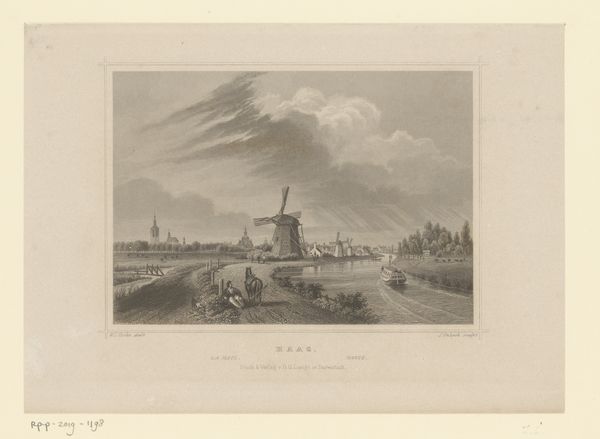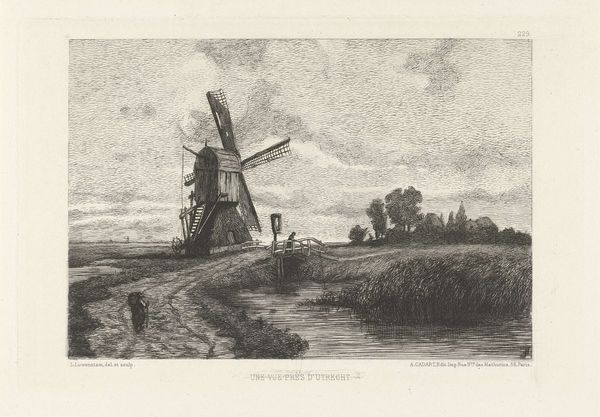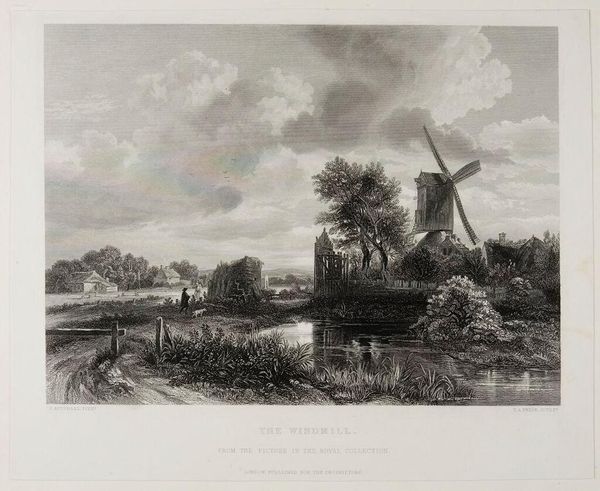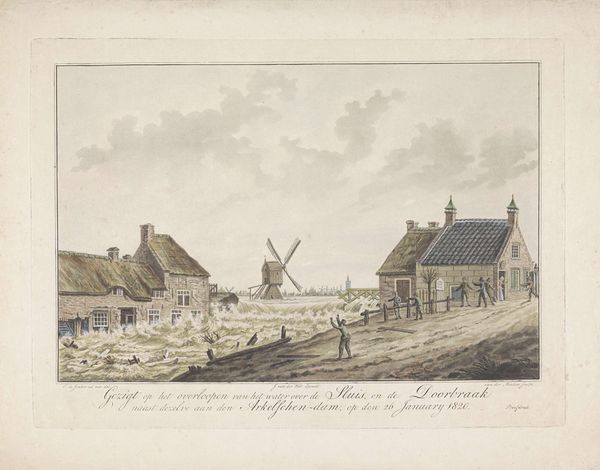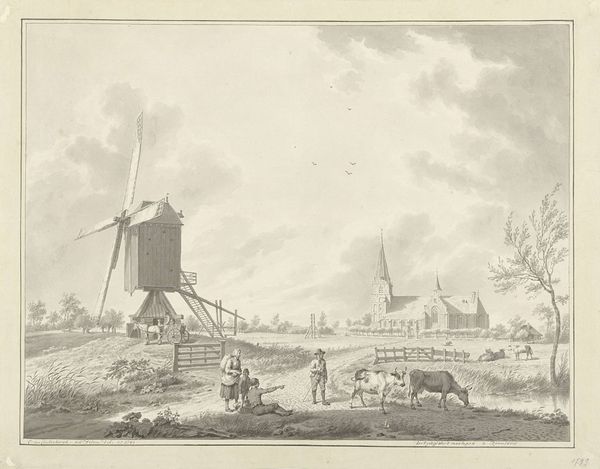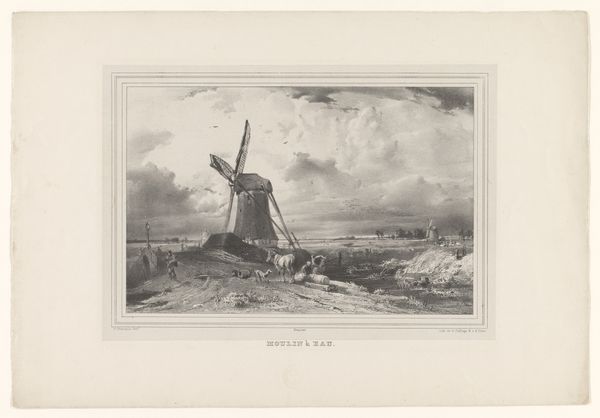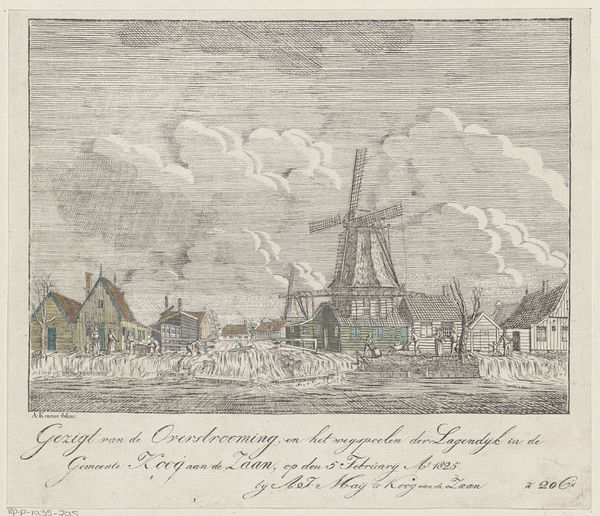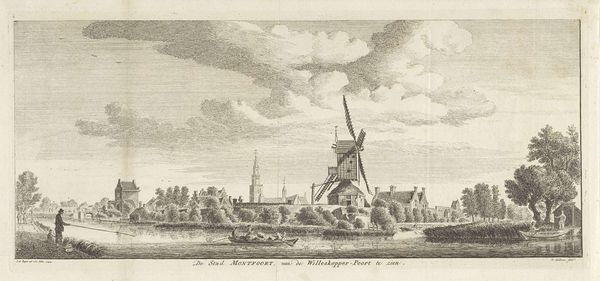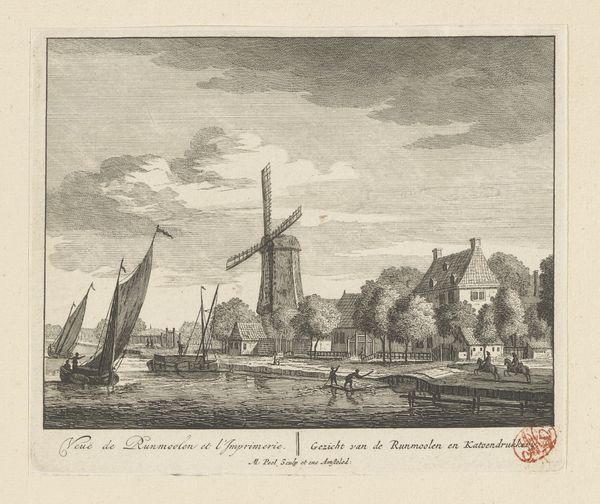
drawing, print, etching
#
drawing
#
dutch-golden-age
# print
#
etching
#
pencil sketch
#
landscape
#
cityscape
Dimensions: height 250 mm, width 330 mm
Copyright: Rijks Museum: Open Domain
Editor: Here we have "De molen bij Den Haag," a print by Petrus Augustus Beretta created sometime between 1815 and 1866. It depicts a tranquil waterside scene featuring a windmill. The etching and use of line give it a slightly hazy, dreamlike quality. What are your observations of this piece? Curator: Immediately striking is the formal structure, most noticeably the clear separation between foreground and background. Note the subtle tonal gradations Beretta employs to suggest depth, moving from the darker, more defined areas near the river's edge to the soft, atmospheric rendering of the sky. Consider the dynamism created by the contrast between the solid, vertical form of the windmill and the horizontal expanse of the landscape. How does this juxtaposition contribute to the overall reading of the image? Editor: It makes the windmill seem like the dominant element, even though it’s off to the side. It feels…grounded, like the solid anchor point of the composition. Is there significance to how he framed it within the landscape? Curator: Indeed. Note how the windmill's structural lines, further emphasized by its reflection in the water, draw the eye upwards, a directional pull echoed, yet softened, in the clouds. The deliberate placement creates a sense of balance. Further, the fenced enclosure creates a strong linear pattern, juxtaposed with the natural landscape beyond, revealing artifice meeting the elements. It invites a contemplation about our imposed order onto nature. Editor: I see! It's all very carefully balanced, not just a random snapshot. It also suggests that beyond it being just a visual representation it opens up discussion around society and industrial development, I am left wondering, what’s nature, and what’s not? Thank you for this explanation. Curator: You're welcome. Paying close attention to form reveals so much.
Comments
No comments
Be the first to comment and join the conversation on the ultimate creative platform.
